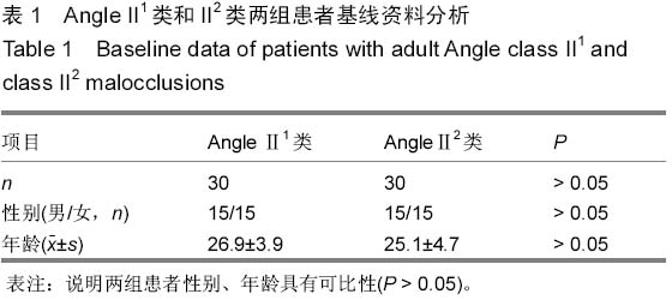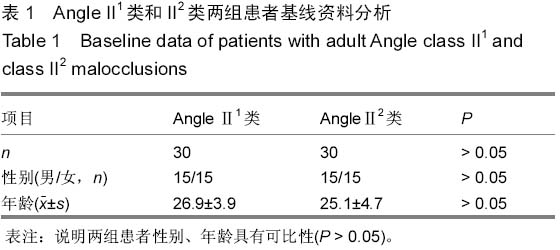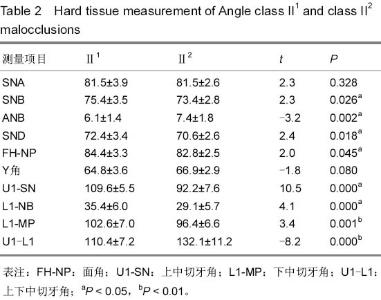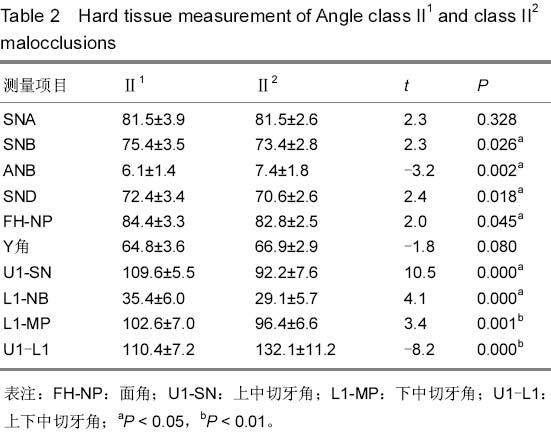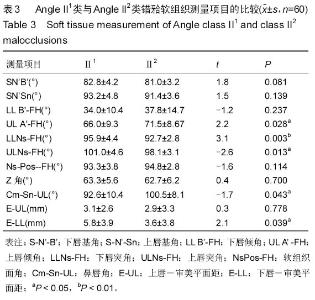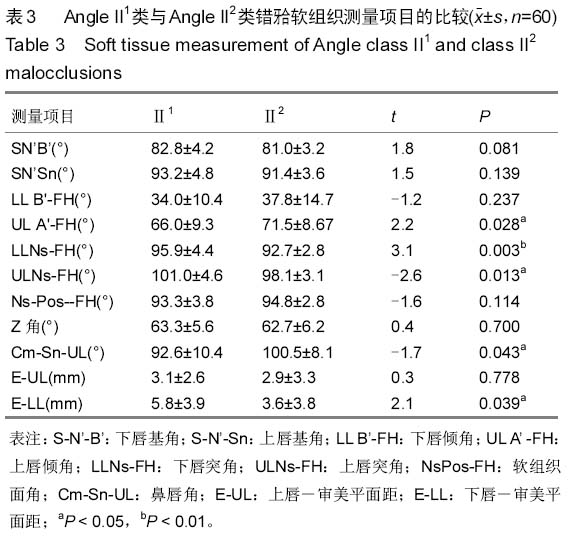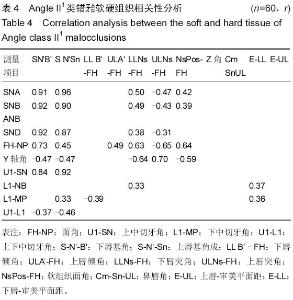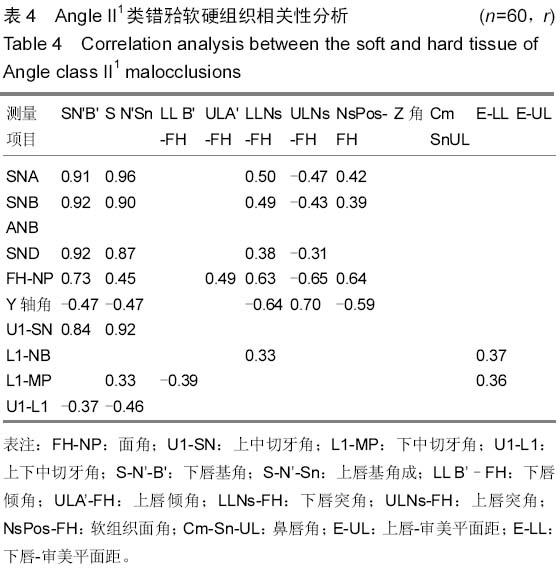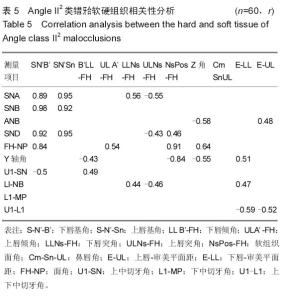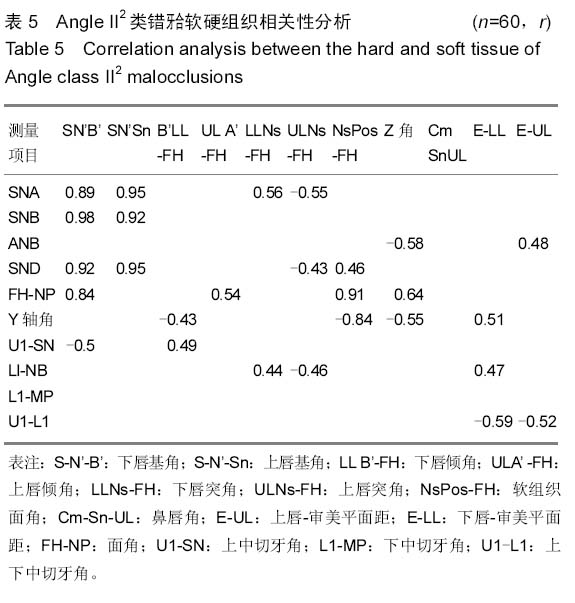| [1] 傅民魁,张丁,王邦康,等.中国25392名儿童与青少年错牙合畸形患病率的调查[J].中华口腔医学杂志,2002,37(5):371-373.
[2] 李晓智,杨洪江.X线头影测量分析自动化系统研究[J].南师范大学学报,2003,28(2):214-215.
[3] Baccetti T,Franchi L,McNamara JA JR,et al.Eerly dentofacial features of class II malocclusion:A longitudinal study from the deciduous throuth the mixed dentition.Am Orthod Dentofac Orthop.1997; 11(1):502-505.
[4] Bishara SE,Jakobsen JR,Vorhies B,et al.Changes in dentofacial structures in untreated Class II division 1 and normal subjects:a longitudinal study.Angle Orthod.1997;67(1):55-66.
[5] McNamar JA Jr,Peterson JE Jr,Alexander RG.Three-dimensional diagnosis and managenent of Class II malocclusion in the mixed dentition.Semin Orthod.1996;2(2):114-37.
[6] 叶庆,赵志河,赵美英.安氏II1类错牙合不同骨面型的牙颌垂直向形态特征分析[J].上海口腔医学,2006,8(4):370-372.
[7] 李琳.安氏II类错牙合人群X线头影测量的性别特征研究[J].广东牙病防治,2004,12(2)41-42.
[8] 刘继光,李晓光,王曦,等.成人安氏II1与II2类错牙合的颅面特征对比研究[J].黑龙江医药科学,2008,6(31):48-49.
[9] 袁东辉,左艳萍,董福生,等.恒牙初期安氏II类、III类错牙合软组织侧貌特征X线头影测量的多因素分析[J].现代口腔医学杂志, 2006, 20(1):21-22.
[10] 黄敏,赵磊,杨瑜.大理白族正常牙合青少年牙及牙弓的测量研究[J]. 中国实用口腔科杂志. 2012,12(5):751-753.
[11] 张继东;曹庆堂;刘爱青.Ⅱ类骨面型前牙深覆盖患者矫治前后颌面部特征分析[J] .现代口腔医学杂志,2014,28(4):226-229.
[12] 刘严,常新.X线头影测量水平向指标的对比研究[J].大连医科大学学报,2014,36(6): 580-591.
[13] 孙慧颖,侯晓利,韩晶莹,等. 哈尔滨地区正常牙合软组织侧貌形态学研究[J]. 临床口腔医学杂志,2013,29(11):287-291
[14] 任静,白丁.安氏Ⅱ类亚类错牙合畸形的病因及其矫治[J].国际口腔医学杂志, 2013,40(1):117-120
[15] 李晓光,赵玥,王瑾曈,等.成人安氏II1类与II2类错牙合软组织侧貌对比研究[J].2014,37(6):37-40.
[16] 傅民魁,口腔正畸学[M]. 6版.北京:人民卫生出版社,2012:53-55.
[17] 张本君,王秀印,张兆莲.安氏II1与II2类错牙合的颅面特征对比分析[J].山东大学学报,2002,5(10):367-369.
[18] 刘燕萍,刘婧,叶翁三杰,等.安氏I类错牙合与安氏II1错牙合患者颅面关系的研究[J].杰临床口腔医学杂志, 2004,12(20):157-159.
[19] 李多,梁甲兴,林立,等.安氏II1与II2牙合唇齿关系的形态特征[J].福建医科大学学报,2005,10(4):413-414.
[20] 郑旭,林久祥,谢已岳.安氏II1错牙合软硬面型相关性的研究[J].口腔正畸学,2000,7(2):62-65
[21] 张扬,任稚秋,冯翠娟,等.安氏II1错牙合软组织侧貌分析及软硬组织的相关性研究[J].中国医科大学学报,2004,4(2):131-133. |
